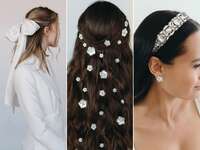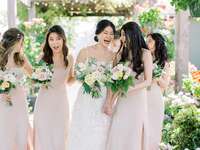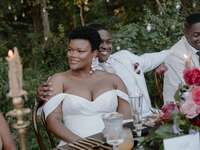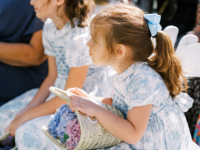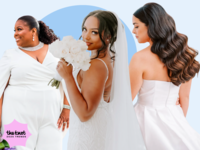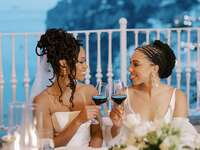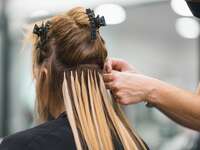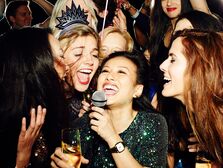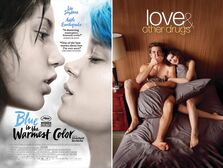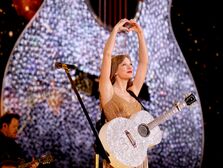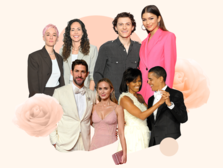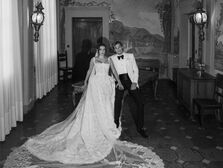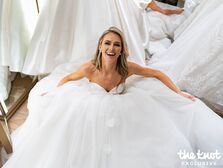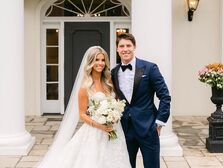How to Choose a Wedding Hairstyle, According to Experts
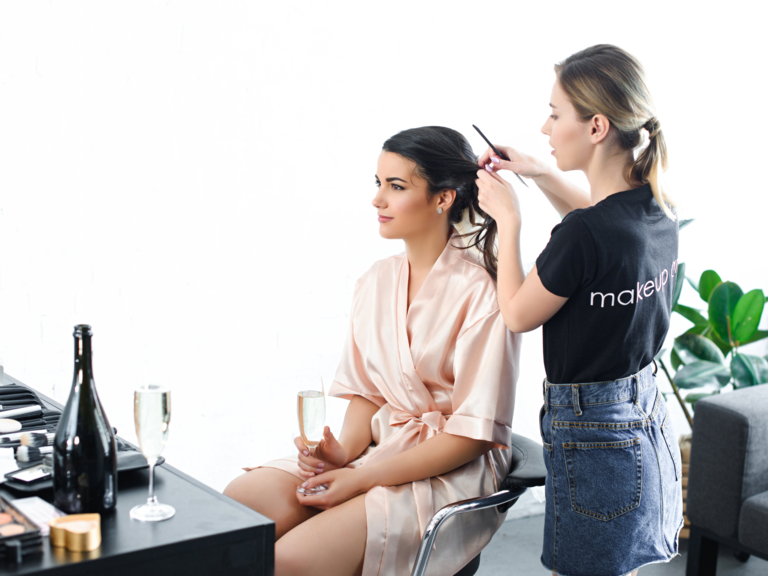
Just as there are specific factors to consider when selecting your wedding dress, your venue—even your partner!—there are definitely things to think about when it comes to wedding hair. So, we asked the experts how to choose a wedding hairstyle. Their best advice is below, but one thing stood out that we deemed worthy to be said right from the jump: It comes down to confidence. Surely you'll want to look your best on one of the most important days of your life, and looking your best is a product of feeling your best. So, how do you feel most confident? Are you a hair-up or a hair-down person? Do you like your face framed or everything swept back? Once you've honed in on how you feel most confident, keep reading for six top tips for selecting a wedding hairstyle from Chicago-based hairstylist Erin Graham and the UK's Deborah Lola, a hairstylist and educator who specializes in Afro-Caribbean hair.
Schedule a Hair Trial
First and foremost, schedule a hair trial at least 2 or 3 months in advance of the wedding. You can book your stylist first and schedule a trial with him or her, or do trials with multiple stylists to see which you vibe best with (but remember to allow for extra room in the timeline if you're doing multiple trials). Either way, this step is paramount. "[During a hair trial] we discuss every detail, but I have them start with explaining their wedding vibe, and how they want to feel showing up in that space," Graham says. "Then we work together to curate a look to complement." Especially for Black brides opting for braids or other protective styles, Lola discusses if they'll be going on a honeymoon directly after the wedding. "Their chosen service or hairstyle could affect their chosen honeymoon style," she says.
Consider Your Hair Type
"A bride's hair type is the No. 1 factor when determining realistic expectations and if extensions, haircuts or color will be needed to achieve their dream look," Graham says. This includes accommodating for fine or thick hair, curly or straight, long or short—but also how your hair type will react to the elements of the location and season (re: heat and humidity). "It's one thing if you are showing up for a one-hour event versus needing to be photo-ready for 10-plus hours," she says. "You know your hair best and if it responds well to high humidity, let's roll with it—however this is not the case 95% of the time."
Fear not: For the 95% of brides whose hair does not respond well to humidity, she has some suggestions. "I would suggest going with a sleek, snatched bun with beautiful, glowy makeup," she says, pegging Sofia Richie and Hailey Bieber as icons of this wedding look. "You won't have to worry about your hair all day, and you will look red carpet chic in every image."
Lola also mentioned managing expectations; it's often the less glamorous part of a wedding hairstylist's job. "Most brides tend to want styles that may not be ideal for their hair texture and type," she says—but don't be discouraged. "[In this case] we advise various options for the bride to achieve her desired style, such as adding hair extensions for length and volume or using a wig. I always make sure to offer options and alternatives as it is imperative that I am able to manage their expectations."
For humidity, Lola recommends updos as well. "It is recommended to do a style that can withstand humidity such as hair up, adding extensions where the majority of your hair is put away such as a weave installation, or adding clip-in extensions."
Look at Your Gown's Neckline
Choosing your wedding gown neckline and choosing your wedding hairstyle can present a bit of a chicken-or-the-egg conundrum. Certain hairstyles go best with certain necklines and vice versa. So, that said, "strapless dresses allow you the most versatility," Graham advises. "If you are more comfortable with your hair down, strapless allows for this without covering up your straps or any embellishments. Wearing your hair up in a strapless allows you to show off your shoulders and neckline and have more of a chic, curated look." Lola loves hair down with strapless gowns—think a glamorous Hollywood wave—or half up-half down.
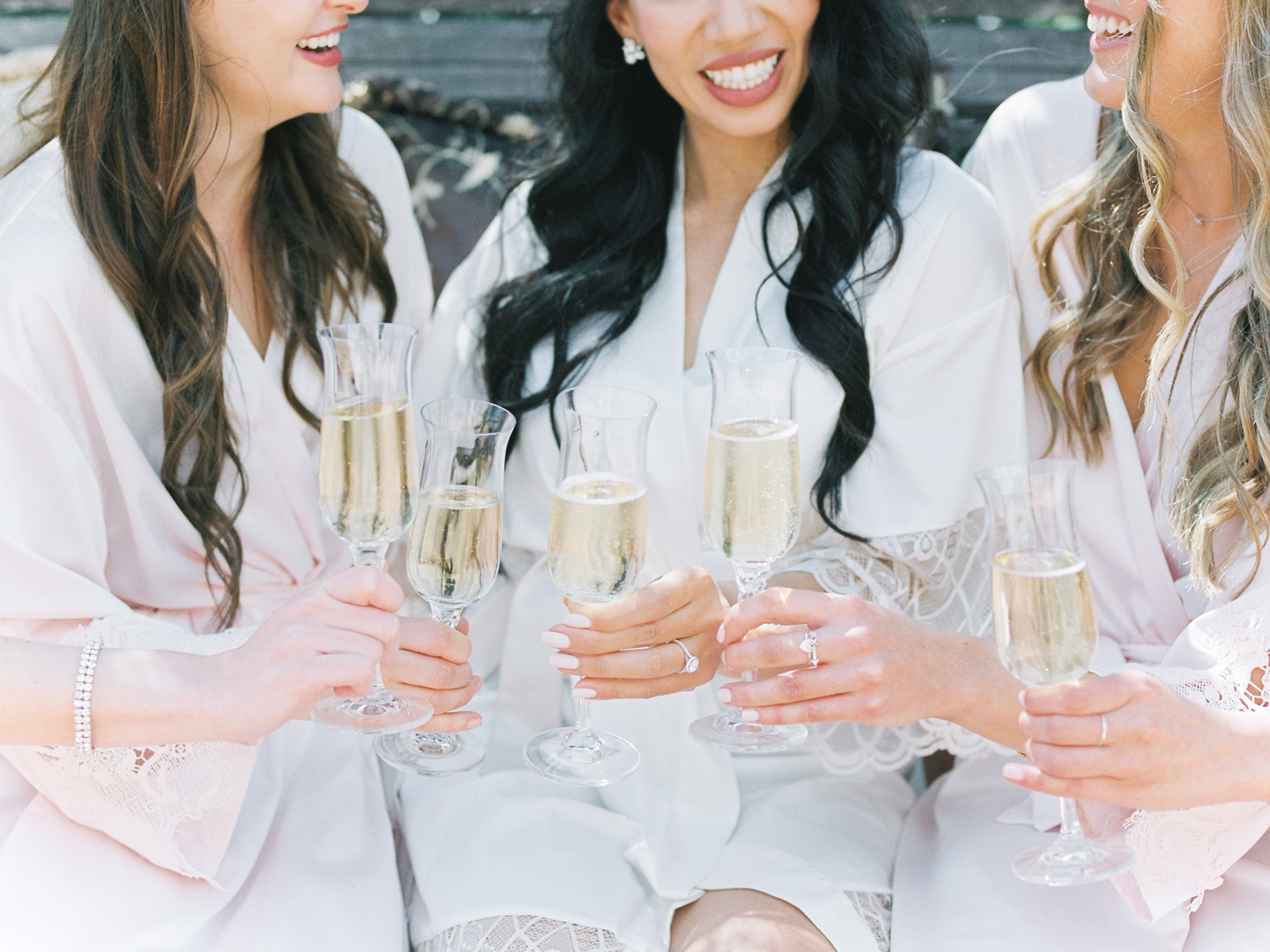
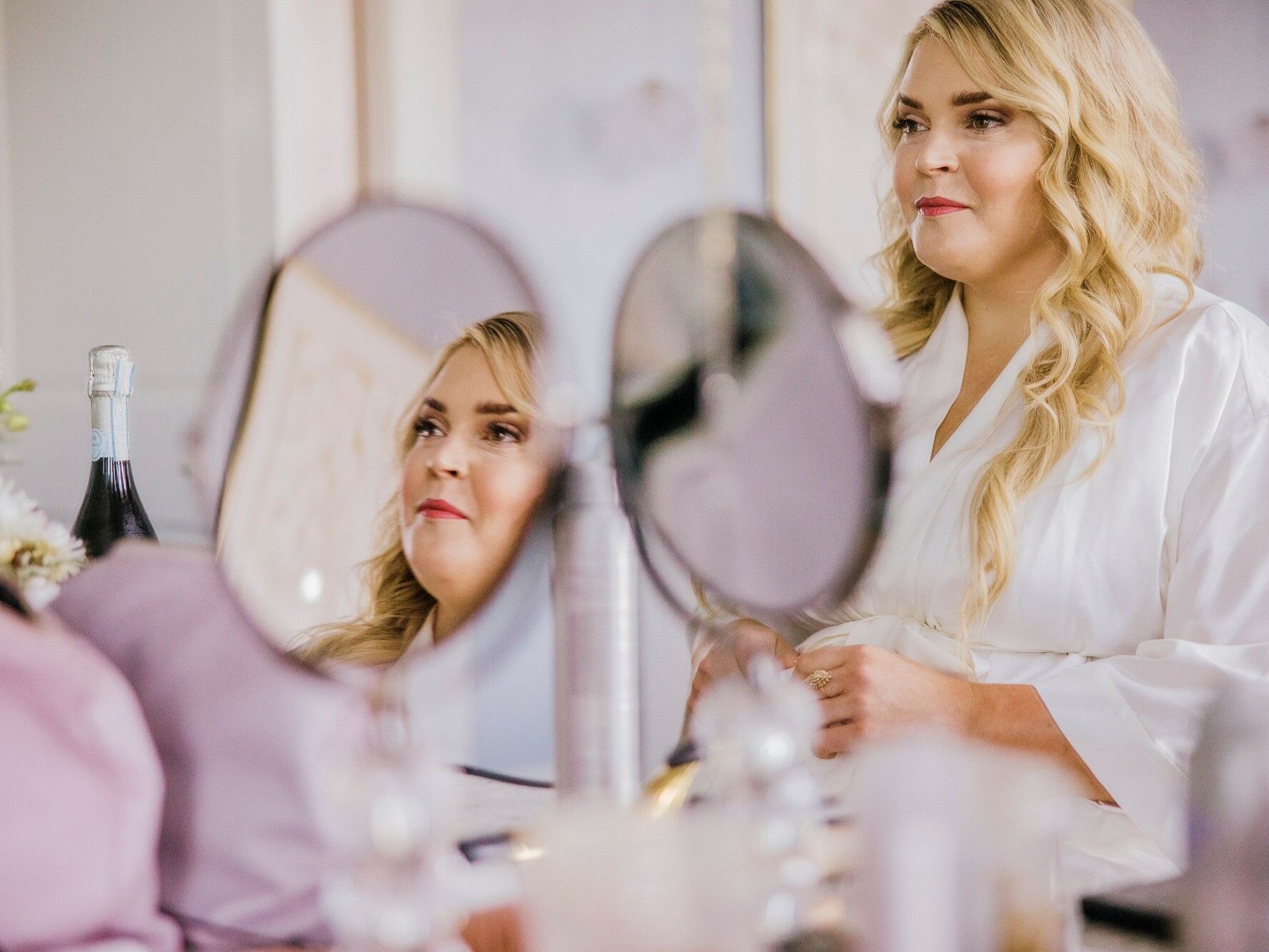
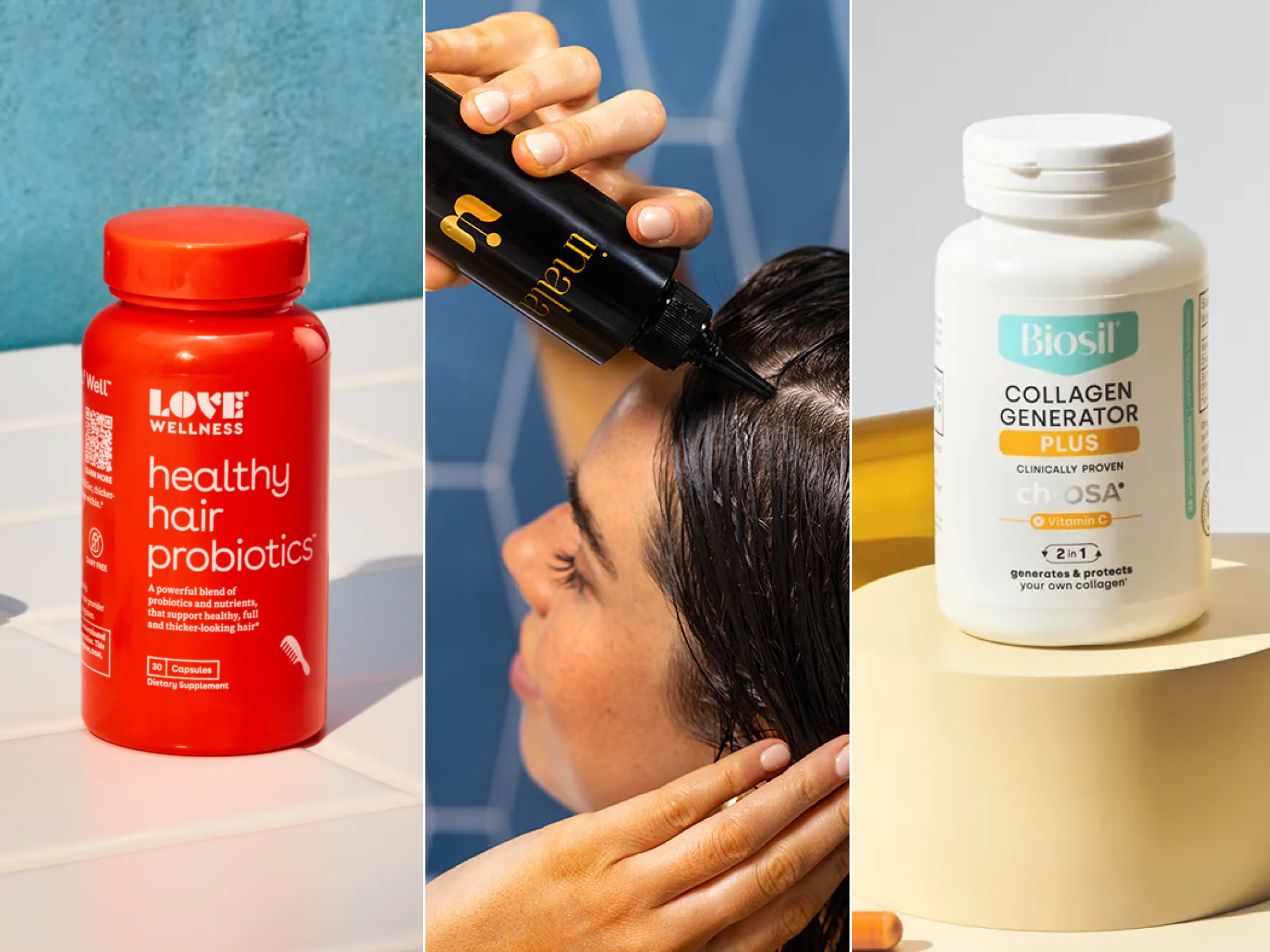
For halter neck gowns, Graham highly recommends a hair-up style; one-shoulder dresses work with up or down hair (but she recommends sweeping down hair to the side of the dress without the strap); backless dresses allow both up and down, depending on your confidence level. " I personally love hair up in a Brigitte Bardot or Pam Anderson-type of updo, leaving the back exposed and really highlighting this part of the dress," Graham says. "However, some brides feel too exposed in this case and like to wear their hair down for a little less skin showing."
Pro tip: No matter the style you're hoping to achieve, wear a shirt or dress with the same neckline as your gown to your hair trial to make sure the looks align.
Accessories: Do or Don't?
According to the experts, there's no practical need for an accessory, but accessories can be a fun way to bring in sentiment or add a bit of glamour. "Sometimes brides add accessories that have sentimental value, but they are primarily aesthetic," Graham says. "Whether it be floral or a brooch or crystal spray of some sort, I recommend brides stick with something small, in their color palette, and try to match the embellishments on their gown."
As for how to choose wedding hair accessories, Lola advises being intentional. "It's important to consider your dress as well as your hairstyle before deciding on an accessory that could essentially not be required," she says. "Accessories should only be used to complement your overall look, and not to take away from it."
One of the most important accessories to consider is the veil, of course; so if you plan to wear a hairpiece or clip, make sure it works well with the veil or is easily removable. "Sometimes a hair accessory can be too much to wear at the same time as the veil, and in this case, we will pop them in when the veil comes out, typically after the ceremony," Graham says. "If our bride is deciding not to wear a veil, they will then usually add some sort of accessory."
Change It Up
Can't decide on a wedding hairstyle? Remember that you can change it up between ceremony and reception, especially if you're planning a dress change. Graham loves it when brides switch it up midday, but notes there are a few restrictions.
"Down hair to up is usually the quickest and easiest [change], but I love a challenge," Graham says. "We always practice it at the preview beforehand. However, there are some restrictions if you want to go from a super sleek, lots-of-product updo to something down and soft, or from naturally curly to straight; it's almost impossible without washing your hair or wearing a wig. I've gone from an updo to half-down hair a few times this year and we've been able to make it work because of the bride's hair type, time of year, and pro tricks up my sleeve!"
Timeline-wise, you'll want to make sure the change can be made within a window of about 30 minutes. While a change-up is fun (and great for photos!), it's not worth missing your own wedding reception.
Stay Away From Trends
As outlined above, Lola's top considerations for choosing a wedding hairstyle are the dress, the bride's comfort level, and the theme of the wedding. "But most of all," she says, "don't choose a trending style. Always go for timeless, classic styles." This way, you won't look back on photos in a dozen years and say, what was I thinking? Bottom line: Be true to yourself and your aesthetic, and work collaboratively with a stylist you feel comfortable with, and you're sure to find a wedding hairstyle you'll love for happily ever after.


